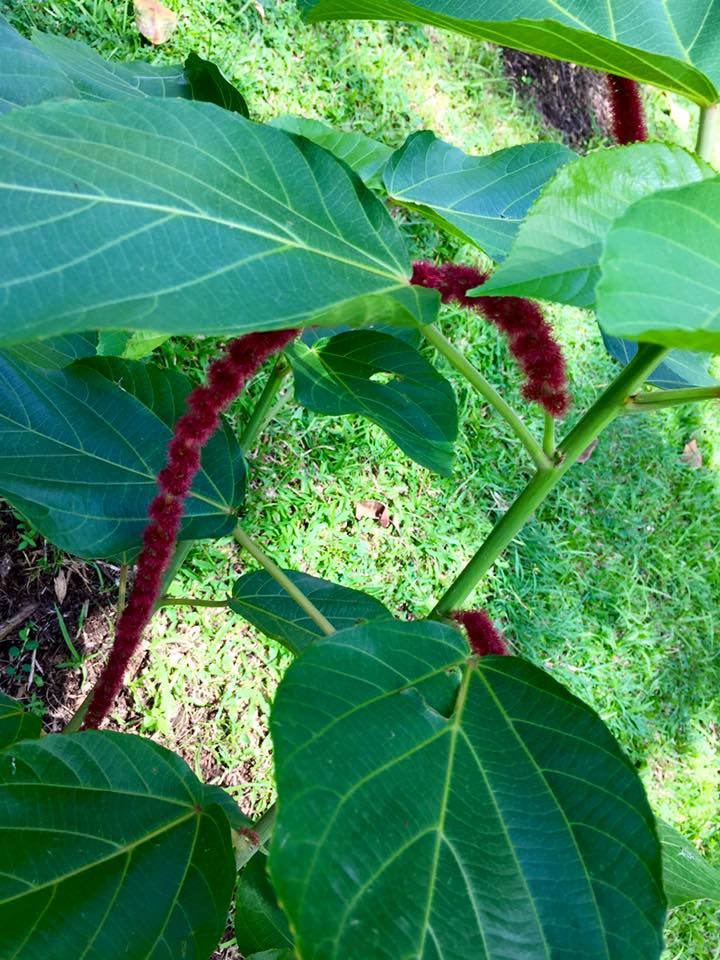Acalypha hispida; Synonym: A. sanderiana



Plant Family: Belongs to the Euphorbiaceae family, which includes Carapite (Amanoa caribaea), a large tree, dominant in the Dominica rain forest; Cassava (Manihot esculenta); the Castor oil plant (Ricinus communis); and the deadly Madjini or Manchineel (Hyppomane mancinella) - the “Sea Venom” of the Caribs; and to the Spaniards, the “little apple of death", both referring to the fact that the Manchineel is one of the most poisonous trees in the world; (the last three and Catstail are decidedly poisonous, a characteristic of many Euphorbias).
Description: Outstanding ornamental shrub; fast growing, up to 4.5 m tall (15 ft) in natural habitat, but in cultivation usually smaller, 1.5-2 m (5-7 ft); grown for its profusion of showy, pendulous, red to purplish inflorescence, 2.5 x 50 cm long (1 in x 20 in); this is the female flower for the male and female flowers are born on separate plants, and the male is not showy and rarely grown; flowering is year round; leaves an attractive vibrant green, are alternate, simple, with pointed tip, up to 22 cm long (9 in); fruit a 3-seeded capsule but usually no fruit since no male plants normally cultivated; all parts of plant poisonous if ingested; in Gardens there are a couple specimen Catstails near the Parrot Aviary.
Natural Habitat: Tropical dry forests; propagated by cuttings.
Origin and Distribution: Native to SE Asia, but now a common ornamental throughout Caribbean, and variously throughout the tropics and subtropics also.



